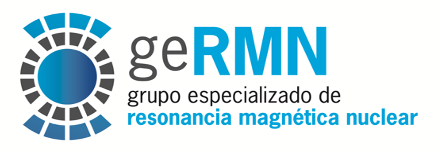
Some of the SeRMN staff has presented our recent research work at the biannual Spanish and IberAmerican NMR meeting, 10th GERMN biennial /9th IberAmerican/7th Iberian NMR Meeting. This year it was a virtual meeting taking place from 26 to 29 April 2021.
Pau Nolis presented an oral communication entitled “Reducing experimental time using Multiple Fid Acquisition“. P. Nolis, K. Motiram-Corral, M. Pérez-Trujillo, T. Parella.
Speeding-up NMR molecular analysis is an important research field which has been continuously advancing since NMR early days. The relevant benefits are clear and evident: i) reduce analysis time per sample => reduce analysis cost; ii) gain spectrometer time to analyze new samples => improve spectrometer efficiency. Multiple FID Acquisition (MFA) strategy consists in the design of NMR pulse sequence experiments accommodating N acquisition windows, each registering different relevant structural information. This strategy is faster
than perform a traditional sequential acquisition of N separated experiments. Several design strategies and practical experiments will be shown and discussed.
Míriam Pérez-Trujillo presented an oral communication entitled “Simultaneous Enantiospecific Detection of Multiple Metabolites in Mixtures using NMR Spectroscopy“. L. T. Kuhn, K. Motiram-Corral, T. J. Athersuch, T. Parella, M. Pérez-Trujillo.
Chirality plays a fundamental role in nature, but its detection and quantification still face many limitations. To date, the enantiospecific analysis of mixtures necessarily requires prior separation of the individual components. The simultaneous enantiospecific detection of multiple chiral molecules in a mixture represents a major challenge, which would lead to a
significantly better understanding of the underlying biological processes; e.g. via enantiospecifically analyzing metabolites in their native environment. Here, we report on the first in situ enantiospecific detection of a thirty-ninecomponent mixture. As a proof of concept, eighteen essential amino acids (AAs) at physiological concentrations were simultaneously enantiospecifically detected using NMR spectroscopy and a chiral solvating agent. This work
represents a first step towards the simultaneous multicomponent enantiospecific analysis of complex mixtures, a capability that will have substantial impact on metabolism studies, metabolic phenotyping, chemical reaction monitoring, and many other fields where complex mixtures containing chiral molecules require efficient characterization.